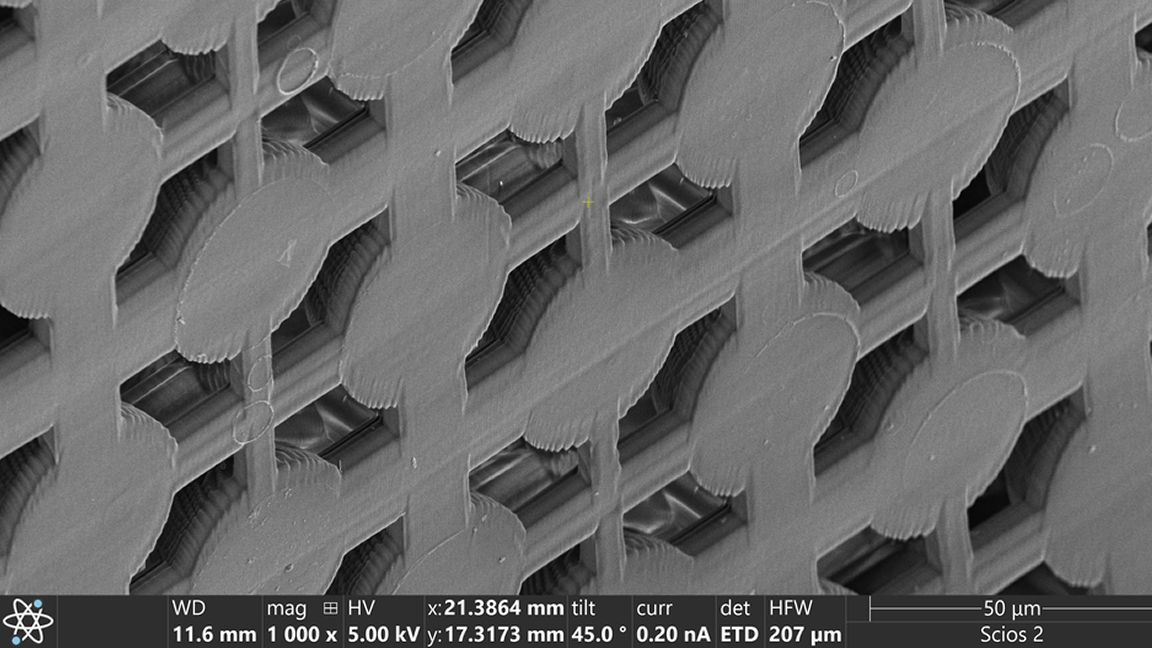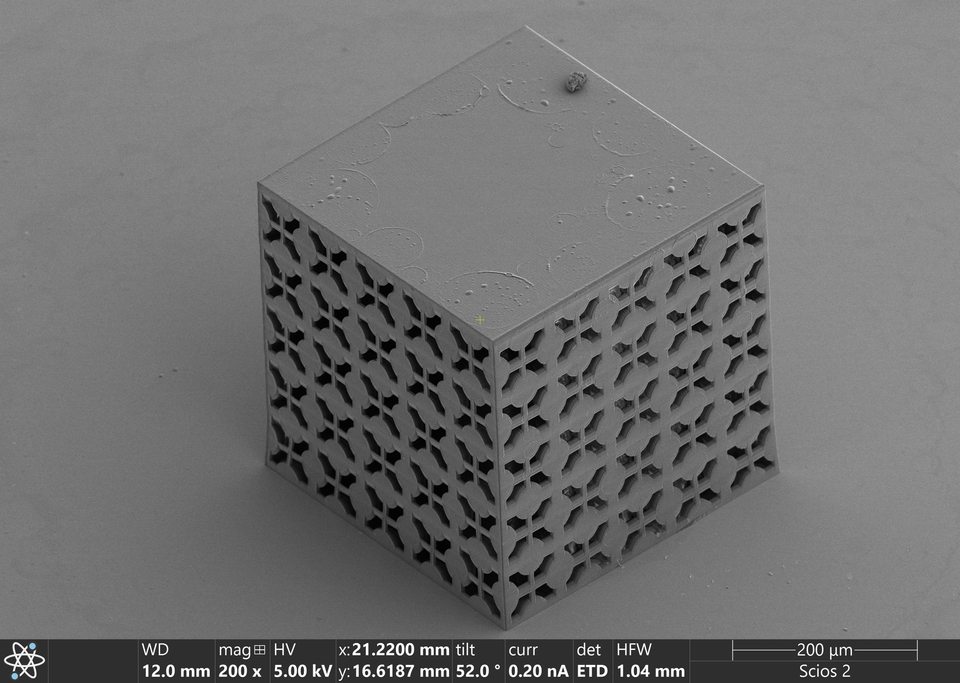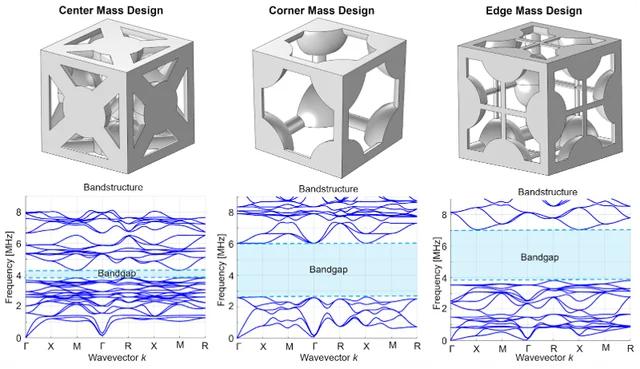3D printed structures 10 times thinner than a human hair — 'extremely intense' laser pulses bring 3D printing closer to Ant-Man's Quantum Realm

It seems like 3D printing is more often than not scaled on the macro side of things, like the world's tallest 3D printed building that we covered recently, but now and then we get to see things from a micro perspective. Today we've got a project to share put together by a team of scientists that have managed to 3D print structures that are so small, you need a microscope to see them. The process creates what the team refers to as scalable phononic metamaterials.
One of the scientists on the team recently shared a post to Reddit answering questions about the development. The setup uses lasers to 3D print extremely small structures that can be fine-tuned in the design process to target specific frequencies for sound dampening. The laser used to polymerize the material when printing is produced with a beam ten times thinner than a human hair.
There are many ways to 3D print with FDM and SLA printers, leading the current market. This 3D printing system relies on a process known as "two-photon polymerization". This is described as a powerful laser that blasts in short bursts to print. Because the structures need to be microscopic in size, this is one of the best ways the team was able to print with the necessary level of precision.


The team has experimented with several different structure designs, ensuring there's plenty of room for further experimentation and customization in the future. The final material can be used in a wide variety of places that make the technology a possible game changer in the world of sound control.
The team provides examples like medical-based use cases or even large-scale applications to dampen noise on a much bigger scale for buildings. This proof of concept requires a special setup at the moment and isn't something that can be replicated on your standard 3D printer. But that doesn't mean we won't see more microscopic 3D printing in the future.
If you're new to 3D printing and want to see what it's all about, check out our list of the best 3D printers to see which ones we personally recommend.
Follow Tom's Hardware on Google News to get our up-to-date news, analysis, and reviews in your feeds. Make sure to click the Follow button.
Get Tom's Hardware's best news and in-depth reviews, straight to your inbox.

Ash Hill is a contributing writer for Tom's Hardware with a wealth of experience in the hobby electronics, 3D printing and PCs. She manages the Pi projects of the month and much of our daily Raspberry Pi reporting while also finding the best coupons and deals on all tech.